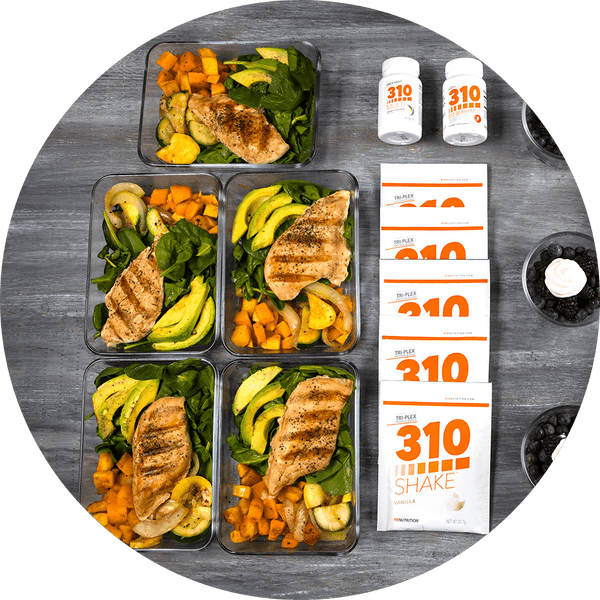310 Food Scale
30 - Day Money Back Guarantee
Ways To Use
Ways to Use This Scale:

1. Making Foods From Scratch
Cooking up new vegetables, lean meats and grains is a great way to eat clean without all the chemicals and preservatives that often come in pre-packaged foods. Instead of accidentally indulging on a whole box of your favorite grains, measure it with your scale to see what a healthy portion should look like before you cook it—or eat it. Remember to consider whether the nutritional information you’re using is based on the cooked or raw version of the food and measure it accordingly.

2. Prepping Food
Instead of cooking every night, save yourself time by, once a week or every few days, weighing your veggies, grains (even uncooked) and meats. Make your life even easier by making “meal packs.” For example, put a measured container of veggies in a bag with a container of measured meat and another container of grains so when you’re ready to eat, everything is pre-measured and ready.

3. Counting Calories
We’ve all been there: “It says 190 calories for 1 serving, but you end up eating about 3/4s of the whole bag… so it’s probably more like 600 calories, right? Or was it 900?”
Instead of guessing, use your scale and calculate calories more accurately.
Keep in mind:
1 gram of fat = 9 calories1 gram of carbs = 4 calories
1 gram of protein = 4 calories
If you had 10 grams of sweet potatoes, for example, the total calorie count would be 40. While this method isn’t foolproof because most foods are made up of a variety of macronutrients, it’s a valuable way to stay in control of how much food you’re putting in your body.
How To Use
Use the handy 310 Food Scale to measure out appropriate portion sizes for every meal. To use, place your cooked food items on the scale to weigh them and determine the best serving sizes based on your healthy recipe. Once you get used to using this for a while, you might even be able to eyeball your food to know how much certain foods weigh so eating the right portion sizes gets easier and easier with time.
Safety Instructions:
- The scale is an electronic precision measuring instrument.
- Dropping, shock, moisture or heat may damage the scale.
- Do not expose the scale to shocks, and be careful not to drop.
- Keep the scale away from water and moisture.
- Keep the scale away from heat sources.
- Always use the scale on a level, stable surface. Do not use the scale on carpets or similar surfaces.
Startup- Inserting/ Replacing Battery:
- Open the battery compartment cover on the bottom of the scale.
- Insert a 3V button cell battery (CR2032) into the battery compartment. Press one side of the button cell battery against the U-Shaped spring until it becomes inserted downwards in the holder.
- Pay attention to the correct polarity when inserting the button cell battery. (the printed side facing upwards).
- Close the battery compartment with the cover.
Operation:
- Turn the scale on by pressing the ON/OFF/TARE Key.
- Begin weighing when the display shows “0”.
- If the scales are overloaded (>5kg), “Err” appears on the display.
- If the battery power is too low, “Lo” appears on the display.
- Put any items to be weighed in the center of the scale. Make sure they do not protrude beyond the scale. If necessary, use a weighing container.
Changing the weight unit:
- The unit of measure can be changed with the UNIT key on the bottom of the scale:
g: Gram
kg: Kilogram
lb: oz: Pounds/ Ounces
water mL: Milliliter – water
milk mL: Milliliter – milk
Switching the scale off:
- The scale switches off automatically after approximately 2 minutes of inactivity.
- To prolong battery life when the scale is not in use (display “0”), it can also be switched off by tapping the ON/OFF/TARE BUTTON
Details
Introducing the 310 Food Scale—your path to perfect portion control.
Even if you eat healthy foods, if you’re taking in more calories per day than you burn, you will gain weight. And, on the other hand, if you’re not eating enough of the right foods, you may feel so hungry that you overeat later in the day. So the key to achieving and maintaining a healthy weight is portion control. That’s why taking the time to focus on balanced meals filled with a variety of clean, whole foods in the right portions is so important. The 310 Food Scale will help you find a healthy balance. Getting into the habit of using a food scale daily will help you when meal prepping, cooking, counting calories, and more!
This all-purpose food scale is an essential piece for your kitchen and has all the functions you need for multiple kitchen tasks. The glass platform resists staining and “flavor carryover” and is super easy to clean. Also, it includes a tare function that allows you to zero out a weight when using a bowl or plate as a container or working with multiple ingredients.



































